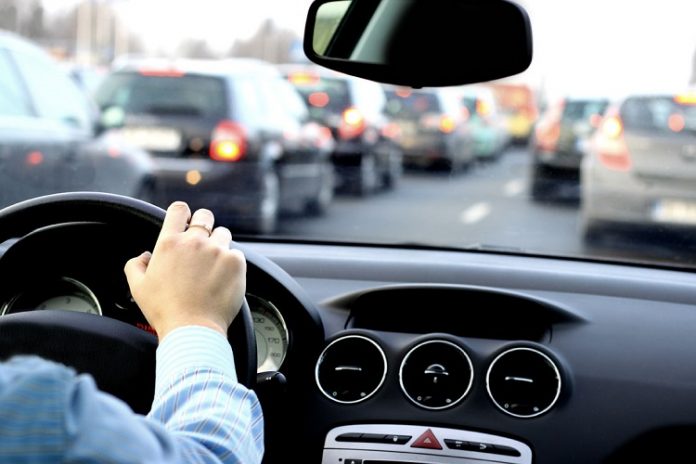This article is written by Abhay, a student from Kirit P. Mehta School of Law, NMIMS. This is an exhaustive article which deals with various aspects associated with Indian Traffic Laws and the reforms needed in the same.
Table of Contents
Introduction
Laws governing traffic on the road are given under the Motor Vehicles Act, 1988, a law passed by the Parliament that came into effect on 1 July 1989 and applies to all parts of India. There are some significant decisions based on concerns regarding road safety problems like traffic collisions, traffic congestion, road rage, underage driving, driving under alcohol influence, etc.
These are some of the main concerns that make it important to focus on current situations. Conducting ourselves sensibly is a legal, social, and moral responsibility. However, very few people on the road do that. The omission of this duty will not only involve the reckless driver, car owner, insurer and others in the legal battle but also bring immense hardship and misery to the life-stricken victim and his family members.
Important traffic laws in India
Protection on the road is a matter for a State. The implementation of the Motor Vehicles Act, 1988 is under the Department of Transportation, which is one of the largest government departments on the basis of receiving revenues.
The aforementioned Act sets out in detail the legal requirements relating to driver/conductor licenses, motor vehicle registration, motor vehicle control by licenses, special provisions relating to state transport undertakings, traffic legislation, insurance, liability, offences, and penalties, etc. The Government of India made the Central Motor Vehicles Rules 1989 for the exercise of the statutory provisions of the Act.
Furthermore, the Rules of Road Regulations, 1989 are also effective. Under Section 68 of the Motor Vehicles Act, 1988, the aforementioned Department of Transport deals with two of the authorities concerned. The regulatory agencies like the traffic police ensure that the formulated regulations are followed.
If in any case, a person breaks traffic law rules and regulations then the transport authorities are entitled to issue Challans against the person under acts as per the Motor Vehicle Act, 1988. It is necessary to know what law states regarding the compliance needed to drive a vehicle.
Law relating to registration of vehicle
According to Section 39 of the Motor Vehicle Act, 1988, it forbids the driving of any motor vehicle or vehicle that is not registered. An owner cannot permit the driving of a vehicle in a public place if it is not licensed as mentioned in the Motor Vehicle act. The exception to the clause is the dealership vehicles.
The vehicle registration is performed by the agency concerned on the criteria of the place of residence or place of work where the car is usually kept by the owner. In the case of joint ownership, one of the proprietors can apply for vehicle registration.
If the vehicle registered in one state is held in another state for more than 12 months, then that vehicle’s owner must contact the registration authority for the issuance of a new registration mark under whose jurisdiction the vehicle is kept or used. If the owner needs to change the address, he must notify the concerned authority within 30 days in whose jurisdiction, he has transferred to report an address change.
Traffic and road safety issues
Indian legislation under the Motor Vehicle Act, 1988, and other similar acts allow for the vehicles to be prohibited from driving on footpaths. There are many acts that indirectly preserve the interests of pedestrians. Sections 279, 304 (Punishment for Culpable Homicide not Murdering), and 336/337/338 of the Indian Penal Code (1860) protects the public, including pedestrians, from rash driving and other negligences.
Sections 7 to 38 of the Motor Vehicles Act (1988) discusses punishing drivers who surpass speed restrictions and regulations licenses etc., implicitly protecting vulnerable road users. Section 138 provision (h & I) encourages the government of the state to prohibit vehicles from using the pavements especially made for the purpose of driving, parking, etc.
The Rules of the Road Regulation (1989) have three essential regulations relating to pedestrian, which are as follows: As per Rule 8, the driver’s obligation to slow down while reaching a pedestrian crossing, no driver can park a motor vehicle near a traffic light or on a pedestrian crossing or a footpath as defined in Rule 15 and motor vehicles shall not drive on pedestrian paths or cycle lanes but can only do that with permission from the duty police officer as mentioned in Rule 11.
The Municipal Corporation Acts also covers public roads and streets by removing all illegal obstructions unless they have been made with the collector’s prior approval. They have the right to decide the width of the footpath, depending on the width of the roads. Under the Persons with Disabilities Act 1995, the authority will have to provide auditory signals, engravings on zebra crossings, slopes in sidewalks for effective wheelchair access, and warning signals at suitable locations.
There are many issues concerning safety on the roads. The first being that the footpaths are not safe for pedestrians. The roads are the city’s most significant public places and pedestrians are its main users. Severe concerns can be seen with respect to pedestrian safety, one can see that the footpaths are used by two-wheelers, the practice of use of zebra crossing is lacking and every road crossing has become a daunting activity.
Besides the laws in effect, we can see in urban areas the bikes intruding footpaths without any action being taken by the authorities. The International Federation of Pedestrians had specifically supported the right to walk as a fundamental human right in public areas, but the impression of the right is to be completely enforced is still to be seen.
The second being the road rage, which can be seen in most of the streets. In India, there is no specific legislation which defines road rage. Road Rage is, simply, a term used to describe the violent events triggered by frustration. Travelling in heavy-traffic areas, especially on highways, may cause injury or death. Road rage is an expression of human activity that has negative repercussions.
Many of the road rage accidents happen at rush and peak traffic hours. Road congestion, noise pollution, time restrictions at workplace, drinking, and driving are the key factors involved with road rage incidents. It is considered a criminal offence that can lead to injury or even death. Even though there are no specific laws defining road rage in India, it is high time the state identified and implemented it strictly so that people do not take law into their own hands as it has become a real threat and reason of concern for an individual’s safety on the road.
Drinking and driving is also a very big problem. Drunk driving is a major factor that leads to accidents. It has been seen in different situations that alcohol was found in most severely wounded drivers, and also in some of the drivers injured in crashes who were not badly injured.
Drivers are not allowed to use dim, black, or reflective glasses in vehicles as provided in the legislation. According to the Hon’ble Supreme Court of India directives, the use of black film or other material on the windscreen and side windows of vehicles is not allowed. The breach is punishable by film removal on-the-spot and challan.
Only vehicles that have fitted tinted glasses with 70 per cent visual light transmission with windscreen & rear window and 50% visual light transmission for side windows are authorized and permitted. In Avishekha Goenka vs. Union of India, the Hon’ble Supreme Court prohibited the use of black films for any VLT percentage or material on safety glasses, front or rear windscreens, or side glasses of all vehicles across the country. As of 4 May 2012, these directives are enforceable.
Ways to stop Road accidents
- There are different types of motorized as well as non-motorized vehicles. They may be of different width and size. But, they use the same road network.
- To minimize overall risk, it is important not just to distinguish fast-moving vehicles from slow-moving and heavy vehicles from light vehicles, but also to impose speed limits on fast-moving vehicles.
- The use of in-built mechanisms in buses and trucks to regulate speeds beyond a certain threshold is increasing in several other developed nations, such devices are seldom used in India, if installed, being deactivated by the operators.
- Commercial buses and truck services, especially private ones, are most often operated on timelines which exert pressure on drivers to increase the speed.
- The level of regulation of traffic law and the extent of violation penalties also impact road users’ behaviours. Low rates of compliance frequently contradict the legislative attempts made to improve road safety.
- Merely policymaking is rarely successful. Without regulation, education, and advertisement campaigns, one can not raise public awareness.
- Training, Innovation, and Deployment are the most important things that have to be kept in mind. Education includes raising awareness in schools about road safety issues, through traffic parks, media and advertising campaigns, posters and hoardings, driver education, training and licensing, etc.
- Engineering initiatives mainly include enhancing road safety through the use of traffic engineering principles, transport planning, road construction geometrics, etc. Enforcement includes issues such as the enforcement of traffic laws by traffic police officers, license credit program, safe / violation-free driving opportunities, use of technology such as radar weapons, Closed-Circuit TV (CCTV), Smart Transport Networks (ITS), etc. Besides these, various driver psychophysical variables often have a major impact on road safety.
- The use of technology such as vehicle-actuated traffic signals, surveillance cameras, enforcement cameras and the setting up of integrated traffic control centres would go a long way in ensuring compliance with traffic laws and thereby enhancing the road safety scenario in India. Enhanced monitoring and graduated licensing for beginners and effective implementation of traffic rules for all drivers are likely to lead larger and more lastingly to road safety.
Effectiveness of the licensing process
Anyone can apply to have a driving license besides the one who is disqualified as per the law. In compliance with Section 3 of the Central Motor Vehicle Act, 1988, no one is permitted to drive in any public place unless he possesses an effective driving license given to him, which gives him the authorization to drive that vehicle.
People under the age of 18 can not drive a motor vehicle in a public place. But if the person is under age 16, he or she is allowed to ride an engine-capacity motor vehicle not exceeding 50cc. No individual less than 20 years of age can drive a transportation vehicle. The Learner’s license means a permit issued for driving as a beginner or motor vehicle identified under a special category or definition by an appropriate authority.
The learner’s license is valid for 6 months. The authority for issuing a learner’s license depends on where you live or work for profit, or on the school or location where he seeks to acquire a driving instruction. Learner’s driving license for a transport vehicle can not be issued until the person has been driving a light motor vehicle for one year.
No individual under the age of 18 shall be provided with a learner’s license to drive a motor vehicle without gear except in writing with the permission of a person wishing to obtain a learner’s license. In the context of vehicles other than LMV, a medical certificate shall be provided with the application.
Licensing authority has the right to terminate a medically incompetent person’s license. Immediate revocation of the license by an individual who has caused one or more persons death or severe hurt. No disability should cause the person to suffer. The Registering Authority has the power to revoke the vehicle registration which is missing, damaged, or permanently considered unfit to use.
In the case, if the number of the engine or chassis is different from the Registration Certificate, the registration authority will revoke the registration too. It is the responsibility of the driver of every motor vehicle to deliver it for inspection by the authorities. The driver is also obligated to stop the vehicle if the vehicle is involved in an accident. Section 5 of the Motor Vehicle Act, 1988 specifically specifies that it is the duty of the vehicle’s owner not to allow driving a vehicle which does not meet the above requirements.
Best road safety practices across the world
- Sustainable Safe Road Infrastructure in the Netherlands seeks to avoid accidents and, even if it happens, it plans to reduce the effects by increasing the size by zones to 30 km/h in built-up areas and 60 km/h outside built-up zones. Road safety audits are a structured method for an independent evaluation of a specific design’s potential for the crash and likely safety results.
- Great Britain first introduced the concept of road safety audits and has since been adopted by several countries. Security Inspection designates a regular review of the security element by a qualified expert. It requires health checks carried out by qualified experts. The bicycle helmet includes thick polystyrene material.
- Mandatory bicycle helmets should be made by law legislation, programs, and regulations. Bicycle side reflections are to improve visibility at night and reflect dusk at the front and rear side of the bicycle to avoid accidents. Our policies relating to traffic and road safety require immediate attention. One of the best reasons for endorsing the same could be international best practices.
- Some of the latest road safety initiatives internationally adopted include many things. Speed is a significant contributor to accidents. Placing devices such as Intelligent Speed Assistance in a vehicle can aid in measuring driver speed at different places and warning drivers to increase speed limits.
- Alcohol Ignition Interlock is a system that prevents when the driver is too intoxicated to start the car. Alcolocks are devices that can be seen in countries like the US, Canada, Australia. One such initiative of the Ministry of Transport is mandatory education on road safety from kindergarten to driving license Level, an Educative Continuum that can be seen in France.
Conclusion
Private bus operators in many places in India connect driver salaries with ticket receipts and the number of trips, which promotes high speed. While Indian speed limits have been implemented on automobiles by different states and union territories and city officials, execution of the same is nearly negligible. The time has arrived to stringently impose speed restrictions on vehicles.
Strict traffic laws and their enforcement are certainly required, but the same could be assured not only by raising the number of traffic challans alone but also by comprehensive road safety sensitization programs right from the childhood and considering the magnitude of such an issue, the programs should be carried out at the institutional level by NGOs, government agencies and road safety institutes.
It’s strange that respect for life and law will emerge from that dissuasion on road safety laws, in fact, the same should start the instant we drive or think about passing anybody. Legislative amendment is required to amend the road safety rule, but this does not negate the rationale for violating any legislation.
LawSikho has created a telegram group for exchanging legal knowledge, referrals and various opportunities. You can click on this link and join:
 Serato DJ Crack 2025Serato DJ PRO Crack
Serato DJ Crack 2025Serato DJ PRO Crack











 Allow notifications
Allow notifications



